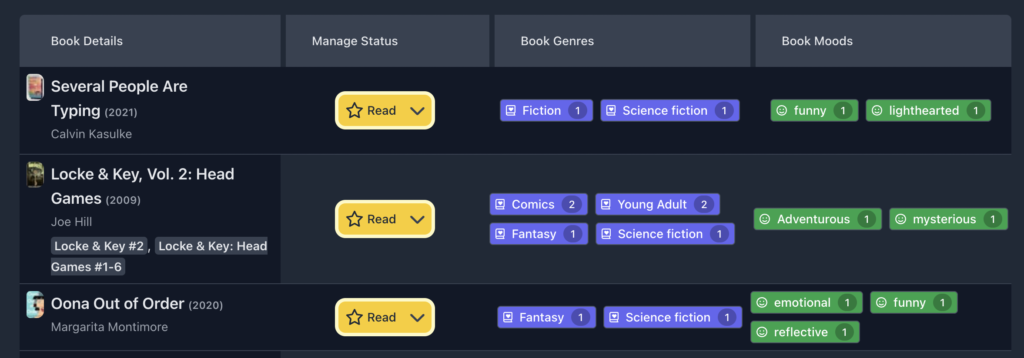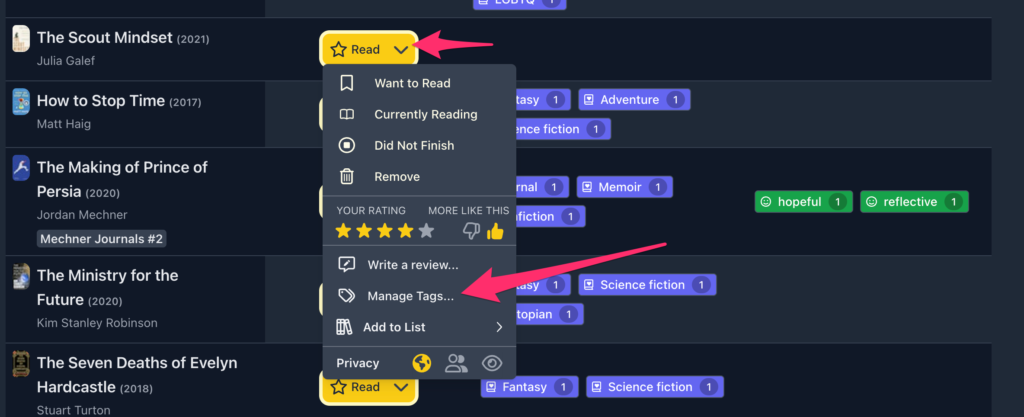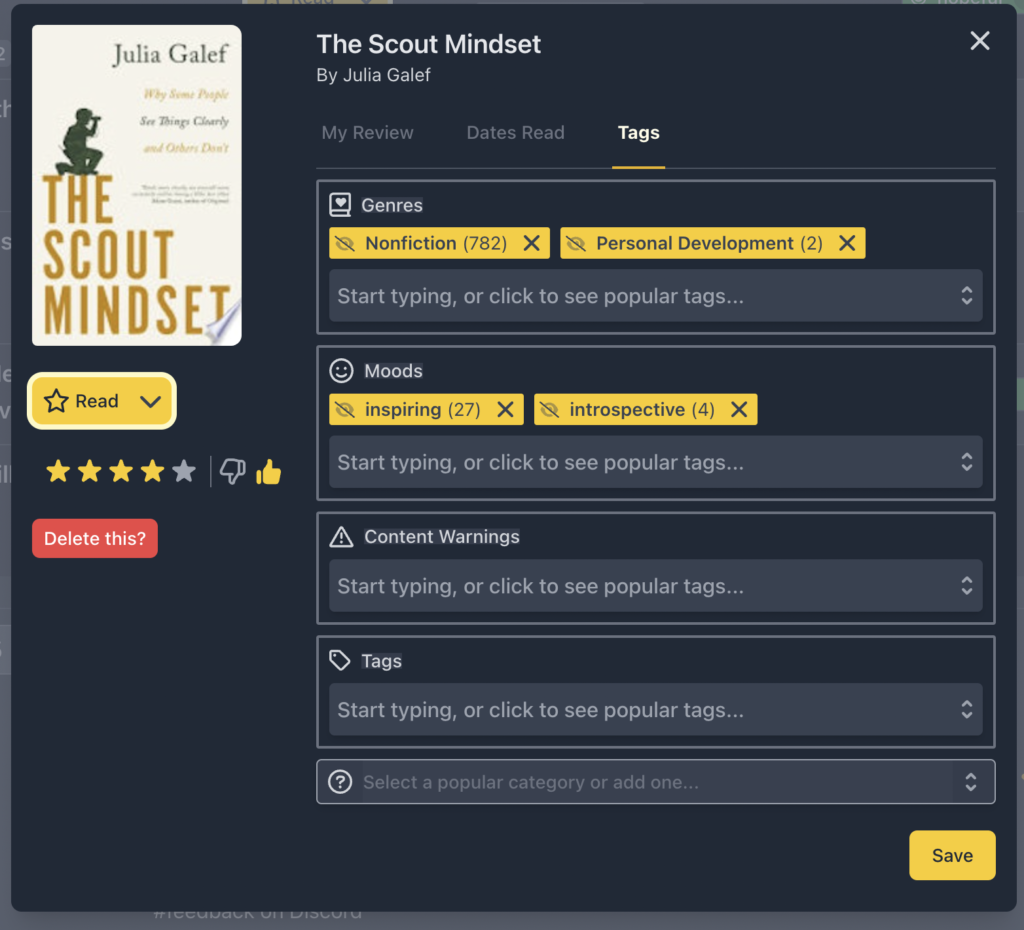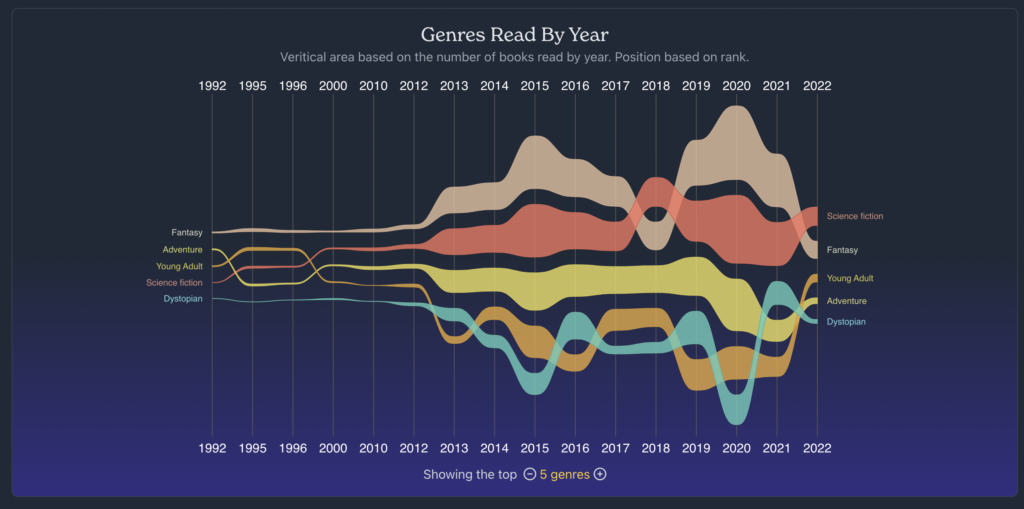Making the Most of Stats
By Adam Fortuna
Every reader on Hardcover gets a custom stats page just for them. We’ll continue to improve this page; answering new questions that readers come up with and finding new ways to highlight readers’ history, tastes, and preferences.
In order to get the most out of this stats page, you can take a few additional steps. That’s the focus of this article.
Overall Stats
Books Read: This is the total number of books you’ve read with a “finished at” date. The reason we do it this way rather than relying on the status of your books is that you can read books multiple times! If you switch a book from “read” to “currently reading” this number shouldn’t go down.
Book referrals: Whenever another reader interacts with a book on Hardcover on a list of yours, a review, or in the activity feed, we track that they found that book because of you. Farther down we share more about referrals.
Authors read: The total number of authors whose books you’ve read in the given period.
Want to read: The total number of books you added to your want-to-read list during this period (that are still in a “want-to-read” status).
Pages read: The total number of pages, or page equivalents read. For audiobooks listened to we use the page equivalent.
Your Favorite Books of All Time
The very first thing you’ll see on your stats page (after a few stats) are your favorite books of all time.

The books that show up in this graphic are your answers to the Prompt What are your favorite books of all time? You can decide to answer this prompt and show off your favorite books, or skip it and not share those publicly.
Books Read By Year
The quickest way to see your reading history is the “books read by year” graph. This highlights the number of books of any kind you read or listened to in any year.

Books Read By Genre and Mood
This chart shows your most common genres using the global genre tag on Hardcover. Each book on Hardcover has 5 “main” tags that we save. Anyone on Hardcover can tag a book. The tags we include here are the only 5 most common tags.

If you’re a Hardcover Supporter, you’ll be able to see all of your genres.
Not every book has genre or mood tags. To find out which books in your library are missing tags, I recommend going to your “Read Books” list, switching to “Table View” and adding in the columns for tags. Here’s an example of what that looks like for my read books page.

As you scroll down this page you’ll no doubt find some books with no moods or genres. You can open the Tag Manager for any of these books and add genres and moods directly from there.

From this modal, you can add any genres or moods you’d like. If you’re the first person to add any genres or moods then we’ll immediately use yours’.

One more thing: you see that little eye icon next to each tag? Click that if the mere existence of the tag is a spoiler. We treat those with special care.
Genre vs Mood By Rating & Count
One of my favorite charts is the genre vs mood chart. This highlights your preferences by showing your average rating or count for the number of books you’ve read that have both the given genre and the mood.
This chart is only available to Hardcover Supporters.

Read vs Listen To
Every time you read a book on Hardcover you can track whether you listened to it, read it, or both. If you’ve read a book multiple times in different formats, that also counts as “both” for this graph.

Books you imported from Goodreads or StoryGraph are all marked as “read” by default. Eventually, we’d like to automatically mark these books based on their format, but we’re not there yet.
We’re working on ways to make it easier to set your reading format for a book. We have two ways to change this right now.
The first and easiest way is to open up your “Read Books” page, and add the “Dates Read” column. On there you can edit the dates you read each book and the format for each read through.

You can also change this for a single book from the book button under the “Dates Read” tab.

Genres & Moods Read By Year
Possibly the most visually striking graph is the area bump chart for genres and moods read by year. This visualization highlights which genres or moods you read the most each year. Top genres and moods will rise to the top.

Like the other visualizations, this relies on books being tagged with genres and moods. You can add your own tags for books to help improve this chart.